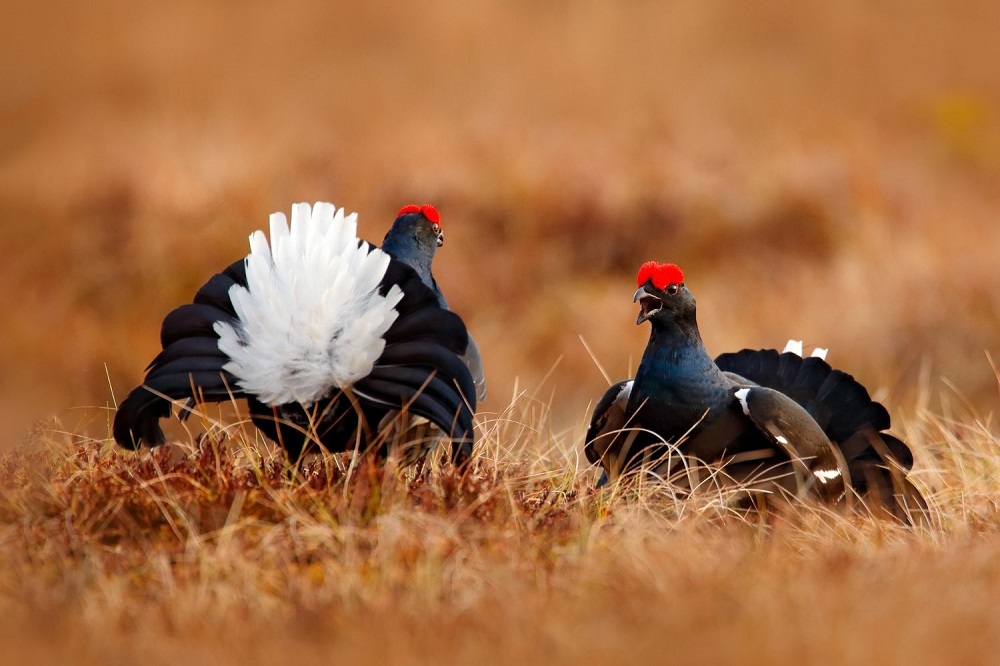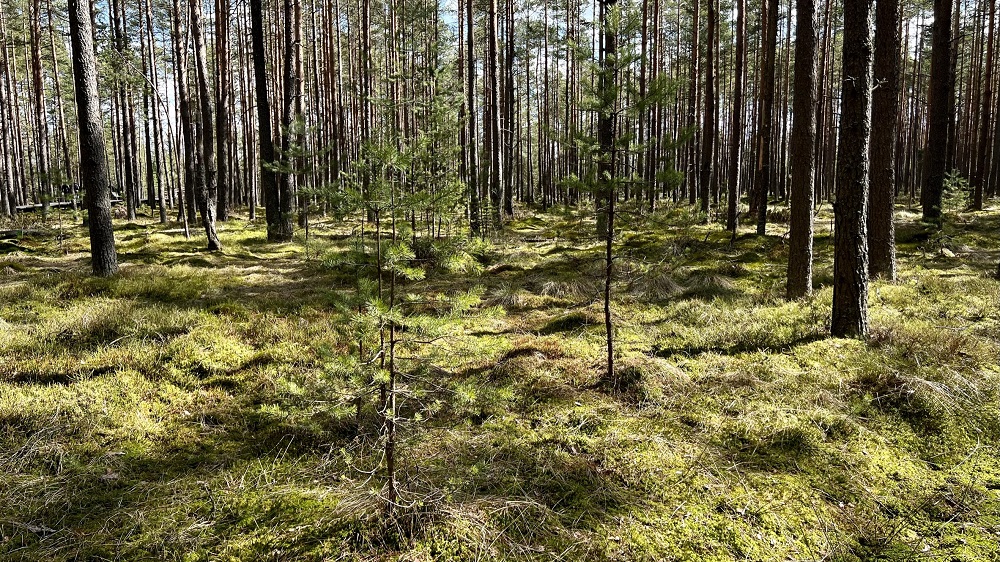In the Carpathians - compared to the lowland areas of our country - peat bogs are rare. The Orawa-Nowy Targ Basin is the largest complex of bogs and mires in southern Poland. They make for a priceless natural system and shape the hydrological conditions of the entire region.
All peat bogs in the Orawa-Nowy Targ Basin developed on top of a layer of very poorly permeable clay with a thickness of about 2 m, which was most likely formed during the last glaciation, in the conditions of a cold periglacial climate, as a result of deflation of the Carpathian flysch dusty material and its accumulation on wet gravel. The prevailing favourable climate conditions were very important for the development of the local peat bogs: relatively cool vegetation seasons, high annual rainfall and low evaporation.
Photo: Piotr Mikołajczyk, UNEP/GRID–Warsaw
Orawsko-Nowotarskie Peatlands are part of the Natura 2000 network. They are protected ast the of PLC120003 site “Torfowiska Orawsko-Nowotarskie” with an area of 8266,68 ha. The following habitats and species listed in annexes to the EU Habitats Directive are protected:
a) habitats from Annex I:
– 3220 Alpine rivers and the herbaceous vegetation along their banks
– 3230 Alpine rivers and their ligneous vegetation with Myricaria germanica
– 3240 Alpine rivers and their ligneous vegetation with Salix elaeagnos
– *6230 Species-rich Nardus grasslands, on siliceous substrates in mountain areas (and submountain areas in Continental Europe)
– 6520 Mountain hay meadows
– *7110 Active raised bogs
– 7120 Degraded raised bogs still capable of natural regeneration
– 7140 Transition mires and quaking bogs
– 7150 Depressions on peat substrates of the Rhynchosporion
– 7230 Alkaline fens
– *91D0 Bog woodland
– *91E0 Alluvial forests with Alnus glutinosa and Fraxinus excelsior (Alno-Padion, Alnion incanae, Salicion albae)
* priority habitats are marked with an asterisk
b) animal species from Annex II of the Habitats Directive:
– 1193 Yellow-bellied toad (Bombina variegata)
– 2001 Carpathian newt (Triturus montandoni)
– 1032 Thick-shelled river mussel (Unio crassus)
– 1014 Narrow-mouthed whorl snail (Vertigo angustior)
– 1013 Geyer’s whorl snail (Vertigo geyeri)
A unique feature of the Orawsko-Nowotarskie Peatlands complex is the presence of dwarf mountain pine (Pinus mugo), which usually occurs at higher altitudes, in the subalpine layer, and the mud pine (Pinus x rhaetica), which is a hybrid of dwarf mountain pine and Scots pine. The flagship species of this region is the black grouse (Tetrao tetrix) - a bird listed in Annex I to the EU Birds Directive, which is highly endangered with extinction, and its lekking grounds should be under zone protection. Butterflies, which are rare in Europe, are also associated with peat bogs, as are some species of arachnids known from only a few localities in Poland.

Black grouse. Source: Freepik
At the end of the Middle Ages (i.e. before the large-scale exploitation of peat began), there were at least 30 raised bogs and associated valley bogs in the area of the Orawa-Nowy Targ Basin. The wetland area was then about 260 km2. Currently, raised and valley bogs in the Basin cover an area of approx. 70 km2. 19 domes (or their fragments) of raised bogs with a total area of approximately 1,300 ha have been preserved.
Despite protection under the Natura 2000 network, some of them show a progressive degradation, and the main threats include:
– water deficit – drainage of peatlands,
– extraction of peat,
– overgrowing of peat dome with shrub and / or woody vegetation, indirectly related to drainage of these habitats,
– afforestation of open areas,
– fires.





